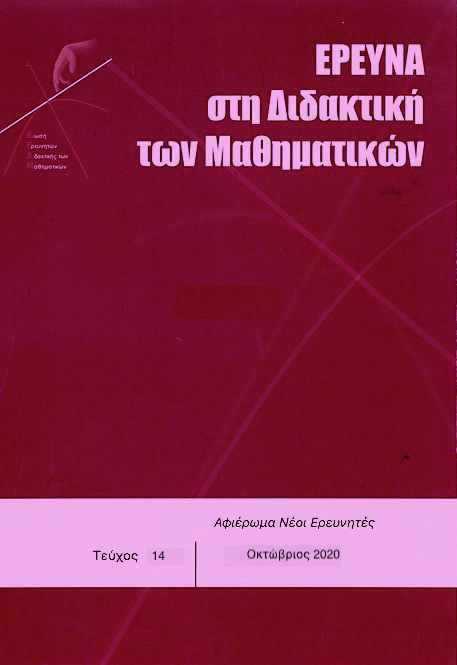H ΚΑΤΑΝΟΗΣΗ ΤΩΝ ΔΙΣΔΙΑΣΤΑΤΩΝ ΓΕΩΜΕΤΡΙΚΩΝ ΣΧΗΜΑΤΩΝ ΜΕΣΑ ΑΠΟ ΤΗΝ ΟΠΤΙΚΟΠΟΙΗΣΗ ΣΕ ΜΑΘΗΤΕΣ ΤΗΣ Δ’ ΤΑΞΗΣ ΤΟΥ ΔΗΜΟΤΙΚΟΥ ΣΧΟΛΕΙΟΥ
Résumé
Στην παρούσα μελέτη επιχειρείται η διερεύνηση του τρόπου με τον οποίο οι μαθητές της Δ’ τάξης του δημοτικού προσεγγίζουν τα δισδιάστατα γεωμετρικά σχήματα μέσα από την οπτικοποίηση. Συγκεκριμένα, σε δείγμα δεκαοχτώ μαθητών εξετάζεται η αξιοποίηση στρατηγικών και δεξιοτήτων οπτικοποίησης προκειμένου να διακρίνουν δισδιάστατα γεωμετρικά σχήματα. Οι μαθητές συμμετέχουν σε δραστηριότητες με γεωμετρικά σχήματα και παράλληλα απαντούν σε ερωτήματα συνέντευξης. Από τα αποτελέσματα της έρευνας διαπιστώθηκε ότι οι μαθητές είναι σε θέση αξιοποιώντας ποιοτικά ορισμένες δεξιότητες οπτικοποίησης (που καταγράφονται) να διακρίνουν σχήματα από πολύπλοκα πλαίσια, ιδιότητες σχημάτων και σχηματικές σχέσεις.
Article Details
- Comment citer
-
Γκεβρέκη (Nikoleta Gevreki) Ν. (2020). H ΚΑΤΑΝΟΗΣΗ ΤΩΝ ΔΙΣΔΙΑΣΤΑΤΩΝ ΓΕΩΜΕΤΡΙΚΩΝ ΣΧΗΜΑΤΩΝ ΜΕΣΑ ΑΠΟ ΤΗΝ ΟΠΤΙΚΟΠΟΙΗΣΗ ΣΕ ΜΑΘΗΤΕΣ ΤΗΣ Δ’ ΤΑΞΗΣ ΤΟΥ ΔΗΜΟΤΙΚΟΥ ΣΧΟΛΕΙΟΥ. Έρευνα στη Διδακτική των Μαθηματικών, (14), 6–21. https://doi.org/10.12681/enedim.22138
- Rubrique
- Νέοι Ερευνητές

Ce travail est disponible sous la licence Creative Commons Attribution 4.0 International .
Οι συγγραφείς των άρθρων που δημοσιεύονται στο περιοδικό διατηρούν τα δικαιώματα πνευματικής ιδιοκτησίας επί των άρθρων τους, δίνοντας στο περιοδικό το δικαίωμα της πρώτης δημοσίευσης. Άρθρα που δημοσιεύονται στο περιοδικό διατίθενται με άδεια Creative Commons BY και σύμφωνα με την άδεια μπορούν να χρησιμοποιούνται ελεύθερα, με αναφορά στο/στη συγγραφέα και στην πρώτη δημοσίευση.


